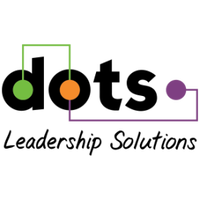|
I can’t tell you how many times I’ve been asked, “should I promote from within or hire externally?” And while I wish there was a quick way to answer this question, there simply isn’t.
When this conflicting decision arises, there are several factors I look at, and recommend my clients consider, to help decide and prepare accordingly. For the most part, hiring from within is seen as a very positive practice. However, if you promote the wrong person, missing the right skills and attitude, you will have upheaval as a result. Likewise, introducing an external hire into the team can bring forth new ideas, fresh thinking and objective perspective. But if the rationale for going external is not understood by the team, and people feel overlooked the person can be rejected pretty quickly–particularly in a tight knit group with an aversion to change. Either way, hiring the wrong fit for the role or the team may lead to:
Taking time to consider the right type of people you need, who fit your environment, share the same values as the team and have the right skill set, is the key to determining whether to promote from within or hire externally. To prevent bad feelings, it is very important to consider internal staff first in your selection process before going outside of the business. To help you learn from other’s experience, I’ve highlighted some scenarios that underscore the pitfalls of in-house promotion vs. external hire. Scenario #1 – Internal Hire Meet Tony Saildude. Tony was a National Sales Director in an ever-changing, fast-paced company that was trying to acquire market share in a highly competitive industry. After his Sales Manager, Joyce Leadcraft left the company to stay at home with her 4 young children, Tony suddenly had an opening in their small business sales division. Over several years, Joyce built the team from the ground up and was always there to ensure deals made it through in a timely manner. She continuously answered policy and process questions and effectively stickhandled internal conflict with both Marketing and Operations. Acting quickly, Tony decided to select his best salesperson, Ron Sharp, for the role. Ron was well liked by the team and senior leadership, always upbeat, a great relationship builder and had been in his role for 4 years, frequently attaining the pinnacle of CEO Sales Club annually. Ron was delighted with the promotion. He received a handsome increase, a parking spot and the coveted ‘inside office’. But shortly after he was promoted, the complaints began rolling up to Tony from the team. Ron wasn’t available like Joyce had been and he didn’t take the time to solve internal issues. He usually took long lunches or breaks and frequently was seen socializing with people in Marketing. Ron was also bossy to the team, barking out deadlines and often raised his voice before closing himself in his office. And when they had internal issues with other groups, he would say things like “suck it up buttercup” leaving them frustrated and resentful. Ron’s greatest strength had always been building rapport with customers, but in his new role, he was stuck in the office all day, forced to stick-handle a myriad of questions and expected to answer to Tony–it was not a good fit for Ron. What Tony really needed was someone who could run interference internally, communicate clear direction, hold others accountable and also be readily available to resolve issues. These were skills and strengths Ron just did not have. The Learning: Questions When Promoting Internally
Scenario #2 – External Hire Meet Mary Newhere. Mary was the new Senior Vice President, Human Resources for a financial services company. The department was built on a foundation of promotions from within the company, so much so that many of the existing HR department did not have HR experience, which was why they hired Mary. Seeing that the business was about to go through quite a bit of change, Mary wanted to hire a successor who could navigate the impending transformation, so she decided to hire externally. She hired Laura Right. Laura had a 25+year HR career from different industries and was highly recommended through Mary’s network. Soon after she joined, Laura realized how tight the current team was and while they really liked her, she found that they rejected any new ideas or suggestions, even though Mary was always supportive. Two months after Laura was hired, Mary was moved to another position and Laura’s new boss became Lester Oldschool–a financial services ‘lifer’ who navigated several departments over his 30 years and was a sceptic about new ideas that may impact the culture. Laura’s peers adored Lester, complaining to him that Laura was hired too quickly and that none of them were even considered for the role. They weren’t happy that she wanted to make change to ‘tried and true’ practices. It wasn’t long before Laura became discouraged and frustrated. She had no other sponsor or support once Mary left. Although her business clients thought she was refreshing, she was unable to affect change in HR and constantly faced a battle. Laura left before her 2-year anniversary after being snapped up by another company. The Learning: Questions When Hiring Externally
Trying to decide between promoting internally versus hiring externally can be a challenge. To avoid creating an unhappy environment, remember to consider your internal staff first, measuring them appropriately against the requirements of the role, before going outside of the business. Hiring the right person and ensuring that they’re successful in their role requires careful consideration and planning. If you need assistance or guidance in this area, contact us to help you assess your environment and needs. Dots Leadership Solutions also offer pre-screening or second interview support, custom recruitment frameworks and custom tool kits to assist leaders in making the right hiring decision.
0 Comments
Your comment will be posted after it is approved.
Leave a Reply. |
Most Popular Posts:
AuthorElaine Adamson is a leadership consultant with Dots Leadership Solutions Inc. A natural dot connector. Passionate about coaching team effectiveness and leadership development she shares over 25+ years of real-life tips and tricks that really work! 
Elaine believes you can discover and leverage strengths to forge a strong team dynamic despite business challenges or organizational change.
She posts some great articles on Linked In too! Topics of Interest
All
Archives By Date
November 2022
|
Specialties |
Company |
|


 RSS Feed
RSS Feed